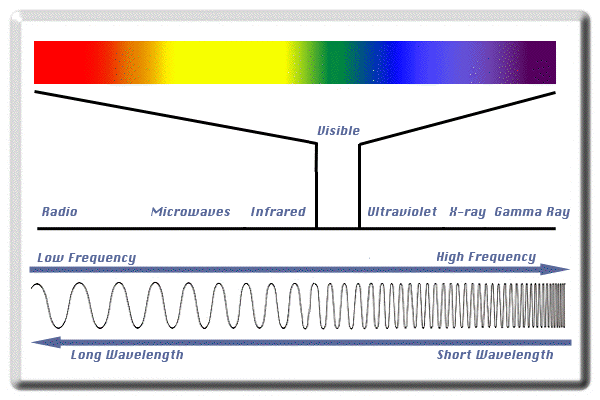Using Visible Light Frequencies for Wireless Data Transfer
July 31, 2011
on
on

In a project named D-light a technology is developed to wirelessly transmit data using visible light instead of radio frequencies. Professor Harald Haas, a pioneer in visible light communications (VLC) and leading the D-Light project, gave a successful demonstration of the technology on the TED global 2011 conference. Using a LED light bulb Haas transmitted a HD video to the screen behind him for the audience to see. And they gave him a standing ovation for it.
The D-Light team has its home at the School of Electronics and Engineering at the University of Edinburgh. The team has realized data rates of 10 Mbit/s but at the end of this year they hope to reach 100 Mbit/s. At the beginning of 2012 a spin-off company will bring the first VLC product on the market.
VLC has a lot of potential. It can ease the strain on the over-crowded radio frequencies. The increasing use of wireless data transfer devices such as Wi-Fi and mobile phones is weighing heavily on the radiofrequencies which causes slow and instable data connections for everybody. VLC opens up a whole new region of the electromagnetic spectrum for data transfer. Radio frequencies range from 3 kHz to 300 GHz and these are rigidly allocated as this United States Frequency Allocation chart (pdf) shows. The visible light bandwidth extends from 400 THz up to 790 THz. So that’s 390 THz extra available frequency for data transfer purposes.
The technology underlying VLC is very simple. LED lamps can be turned on and off very rapidly. Off-mode represents a zero and on-mode represents a one. The on/off flashing light beam is interpreted by the receiver as a binary code. The changes are imperceptible to the human eye, therefore the light can still serve as an illuminator as well. The D-Light team is constantly working on increasing the data rate. This is done by installing several LED lamps next to each other, each individual lamp can send data over parallel light beams. Another way to improve the data speed is by making use of a technique called Orthogonal Frequency-Division Multiplexing. OFDM allows separate data streams to travel the same carrier. Without applying OFDM a light beam can only transmit one bit at a time: on or off, regardless of the strength of the signal. But with OFDM several bits can surf the same light wave parallel to each other. The stronger the signal the more parallel data streams it can carry.
Another advantage of VLC is that it uses far less electricity than radio technique. For instance, base transceiver stations of the cellular network have low energy efficiency because a lot of energy is spend on cooling. VLC can be more energy efficient, especially when the light is simultaneously used for data transfer and illumination.
EDIT: The TED talk with Harald Haas has now been published online. See embedded video below.

Source: www.elektor.de
Photo: Harald Haas at TED Global 2011. By: James Duncan Davidson/TED)
Picture: www.lcse.umn.edu
The D-Light team has its home at the School of Electronics and Engineering at the University of Edinburgh. The team has realized data rates of 10 Mbit/s but at the end of this year they hope to reach 100 Mbit/s. At the beginning of 2012 a spin-off company will bring the first VLC product on the market.
VLC has a lot of potential. It can ease the strain on the over-crowded radio frequencies. The increasing use of wireless data transfer devices such as Wi-Fi and mobile phones is weighing heavily on the radiofrequencies which causes slow and instable data connections for everybody. VLC opens up a whole new region of the electromagnetic spectrum for data transfer. Radio frequencies range from 3 kHz to 300 GHz and these are rigidly allocated as this United States Frequency Allocation chart (pdf) shows. The visible light bandwidth extends from 400 THz up to 790 THz. So that’s 390 THz extra available frequency for data transfer purposes.
The technology underlying VLC is very simple. LED lamps can be turned on and off very rapidly. Off-mode represents a zero and on-mode represents a one. The on/off flashing light beam is interpreted by the receiver as a binary code. The changes are imperceptible to the human eye, therefore the light can still serve as an illuminator as well. The D-Light team is constantly working on increasing the data rate. This is done by installing several LED lamps next to each other, each individual lamp can send data over parallel light beams. Another way to improve the data speed is by making use of a technique called Orthogonal Frequency-Division Multiplexing. OFDM allows separate data streams to travel the same carrier. Without applying OFDM a light beam can only transmit one bit at a time: on or off, regardless of the strength of the signal. But with OFDM several bits can surf the same light wave parallel to each other. The stronger the signal the more parallel data streams it can carry.
Another advantage of VLC is that it uses far less electricity than radio technique. For instance, base transceiver stations of the cellular network have low energy efficiency because a lot of energy is spend on cooling. VLC can be more energy efficient, especially when the light is simultaneously used for data transfer and illumination.
EDIT: The TED talk with Harald Haas has now been published online. See embedded video below.

Source: www.elektor.de
Photo: Harald Haas at TED Global 2011. By: James Duncan Davidson/TED)
Picture: www.lcse.umn.edu
Read full article
Hide full article


Discussion (11 comments)